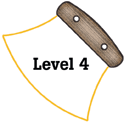
Alaska Science
Key Element C7
 |
Alaska Science |
|
Performance Standard Level 4, Ages 15–18
|
|
|
|
Sample Assessment Ideas
|
Standards Cross-References
|
||
|
National Science Education Standards Science and technology are pursued for different purposes. Scientific inquiry is driven by the desire to understand the natural world, and technological design is driven by the need to meet human needs and solve human problems. Technology, by its nature, has a more direct effect on society than science because its purpose is to solve human problems, help humans adapt, and fulfill human aspirations. Technological solutions may create new problems. Science, by its nature, answers questions that may or may not directly influence humans. Sometimes scientific advances challenge people’s beliefs and practical explanations concerning various aspects of the world. (Page 192) Occasionally, there are advances in science and technology that have important and long lasting effects on science and society. Examples of such advances include the following: Copernican revolution, Newtonian mechanics, relativity, geologic time scale, plate tectonics, atomic theory, nuclear physics, biological evolution, germ theory, industrial revolution, molecular biology, information and communication, quantum theory, galactic universe, medical and health technology. (Page 204) |
Benchmarks From time to time, major shifts occur in the scientific view of how the world works. More often however, the changes that take place in the body of scientific knowledge are small modifications of prior knowledge. Change and continuity are persistent features of science. (Page 8) New ideas in science are limited by the context in which they are conceived; are often rejected by the scientific establishment; sometimes spring from unexpected findings; and usually grow slowly, through contributions from many investigators. (Page 13) Science disciplines differ from one another in what is studied, techniques used, and outcomes sought, but they share a common purpose and philosophy, and all are part of the same scientific enterprise. Although each discipline provides a conceptual structure for organizing and pursuing knowledge, many problems are studied by scientists using information and skills from many disciplines. Disciplines do not have fixed boundaries, and it happens that new scientific disciplines are being formed where existing ones meet and that some sub-disciplines spin off to become new disciplines in their own right. (Page 19) |
|
Table of Contents | Return to Alaska Native Knowledge Network